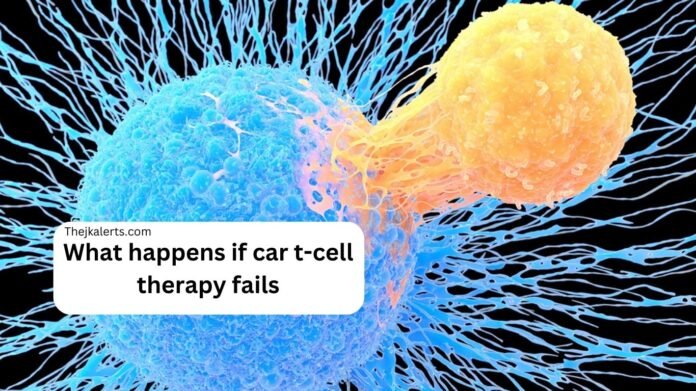What happens if car t-cell therapy fails
In the ever-evolving cancer treatment landscape, CAR-T therapy has emerged as a revolutionary superhero wearing a cloak woven with genetic ingenuity. Imagine unleashing an army of specially trained immune cells that are genetically engineered to precisely hunt and eradicate cancer cells. This is actual CAR-T therapy. But hold the horse. This is not science fiction. That is the most modern reality of cancer treatment. In this blog, we take you on an insightful journey through the complex field of CAR-T therapy, unraveling its science, and revealing its potential for patients battling a formidable enemy within. I’ll make it.
What is CAR-T therapy?
CAR-T therapy, short for Chimeric Antigen Receptor T-cell therapy, is like the rockstar of cancer treatment, boasting a blend of genetic wizardry and immune system prowess. Here’s the scoop: it starts by plucking out a patient’s own T-cells – the foot soldiers of the immune system – and giving them a superhero makeover in the lab. Scientists tinker with their genes, endowing them with a special receptor called CAR, which acts as a homing device, guiding these turbocharged T-cells straight to cancer cells. Once unleashed back into the patient’s body, these reprogrammed cells go on a seek-and-destroy mission, wiping out cancer with surgical precision. It’s like having a personalized army of cancer assassins, ready to take down tumors one cell at a time.
How Does CAR T Therapy Work?
Remember those elite T-cells I mentioned earlier? You can turn into a superhero here. The CAR-T process is like a high-tech training camp for these warriors.
- Recruitment: First, doctors extract her T cells from her blood, similar to selecting the best recruit for a mission.
- Genetic boot camp: These T cells undergo genetic modification and receive a special CAR machine. Think of it like injecting yourself with a super soldier serum that gives you the ability to recognize specific enemy markers (cancer antigens).
- Proliferative Chaos: Her newly formed CAR-T cells enter the “training set” stage and rapidly proliferate into an army ready to fight cancer.
- Avengers Reveal: The Final Step? Bringing these supercharged T cells back into the body and releasing them to seek out and destroy cancer cells with newfound targeting abilities.
Think of this as sending out a highly trained squad with precise information about the enemy’s location. They enter the battlefield (your body), identify targets (cancer cells), and eliminate them with surgical precision. Pretty cool, right?
However, keep in mind that this is just an overview. Stay tuned as we delve into the details of this exciting treatment, its potential benefits, and even some of the challenges.
Benefits and Success Rates of CAR T Therapy
Unleashing the Power of Precision: CAR-T therapy boasts remarkable success rates, with some patients achieving complete remission, even in cases resistant to traditional treatments like chemotherapy.
Targeted Precision Strikes: Unlike traditional therapies that carpet bomb both healthy and cancerous cells, CAR-T cells are trained snipers, selectively targeting cancer cells while sparing healthy tissue.
Long-Term Victory: For many patients, CAR-T therapy offers the promise of durable responses, leading to prolonged periods of remission and improved quality of life.
Breaking Barriers: This groundbreaking approach has shattered conventional limitations, offering hope to patients with previously untreatable cancers, including certain types of leukemia and lymphoma.
Empowering Patients: CAR-T therapy empowers patients with a potent weapon in their arsenal against cancer, providing renewed optimism and a fighting chance for a brighter, healthier future.
What happens if car t-cell therapy fails
If CAR T-cell therapy fails, next steps will depend on avarietyoffactors, including the reason for treatment failure, the patient’s generalcondition, and the specific cancer being treated. Possible scenarios and optionsare:
Re-evaluation and furthertreatment: The medical team re-evaluates the patient’s condition to determine why CAR T-cell therapy has failed. We may recommend alternative treatments, such as different types of immunotherapy, chemotherapy, targeted therapy, or radiation therapy. The choice of treatment depends on factors such as the type and stage of cancer, the patient’s generalcondition, and preferences.
Clinical Trials: If standard treatments are not working, or if youare interested, you may be able to participate in a clinical trial testing a new treatment or combination of treatments. Clinical trials provide access to cutting-edge treatments that may be more effective than standard options.
Supportive care: In some cases, when the cancer hasprogressed and further treatment options are not available or appropriate, the focus may shift to supportive care to reduce symptoms and improve quality of life. thereis. This may include palliative care, pain management, and other supportive interventions.
Second Opinion: Obtaining a second opinion from another oncologist or cancer center may provide additional insight and treatment options not originallyconsidered.
Monitoring and Follow-up: Regardless of next steps, continued monitoring and follow-up by the medical team is essential. Regular physicalexams, imaging tests, and laboratory tests can help detect changes in the cancer and response to treatment and guide further treatment.









